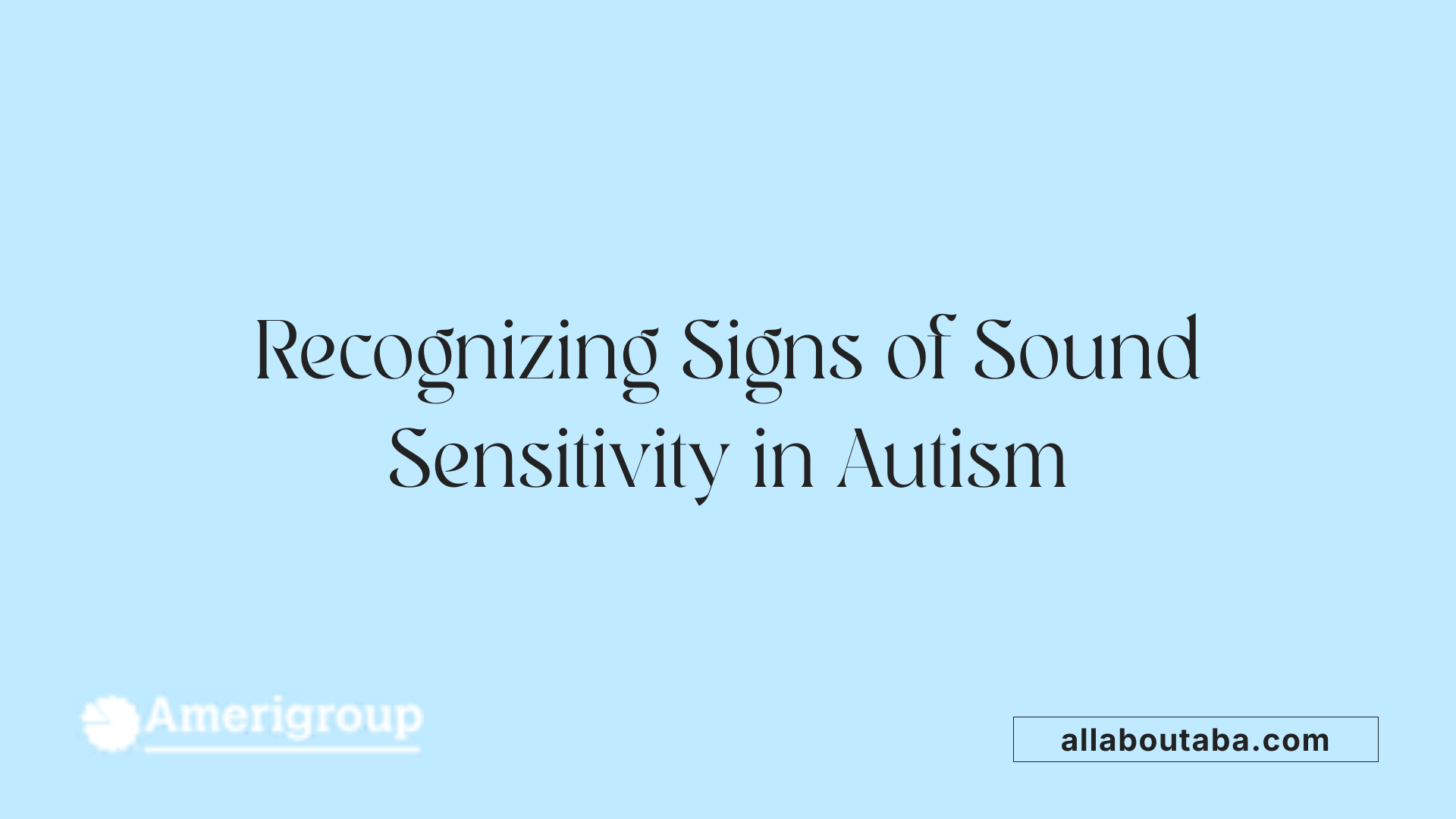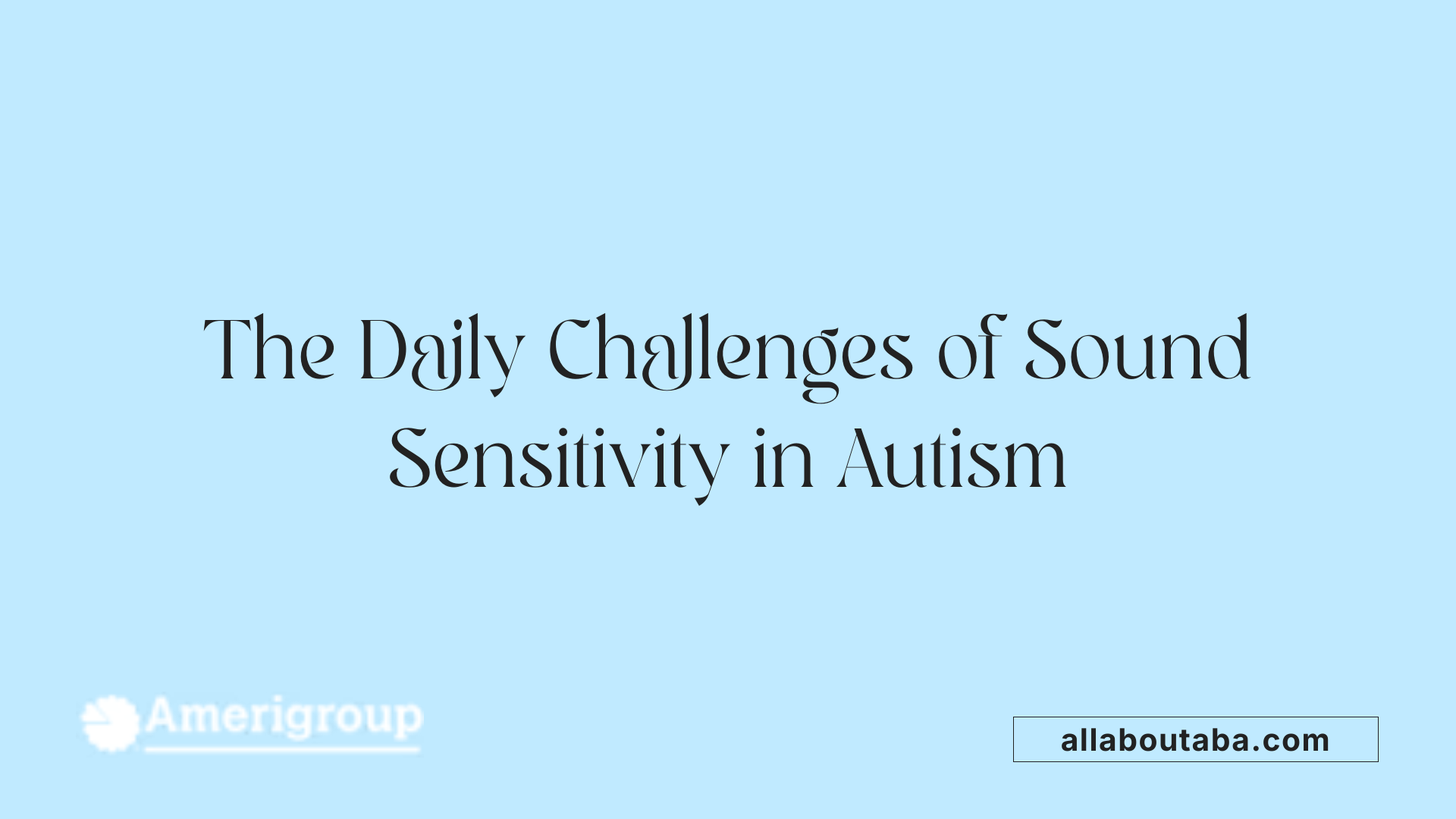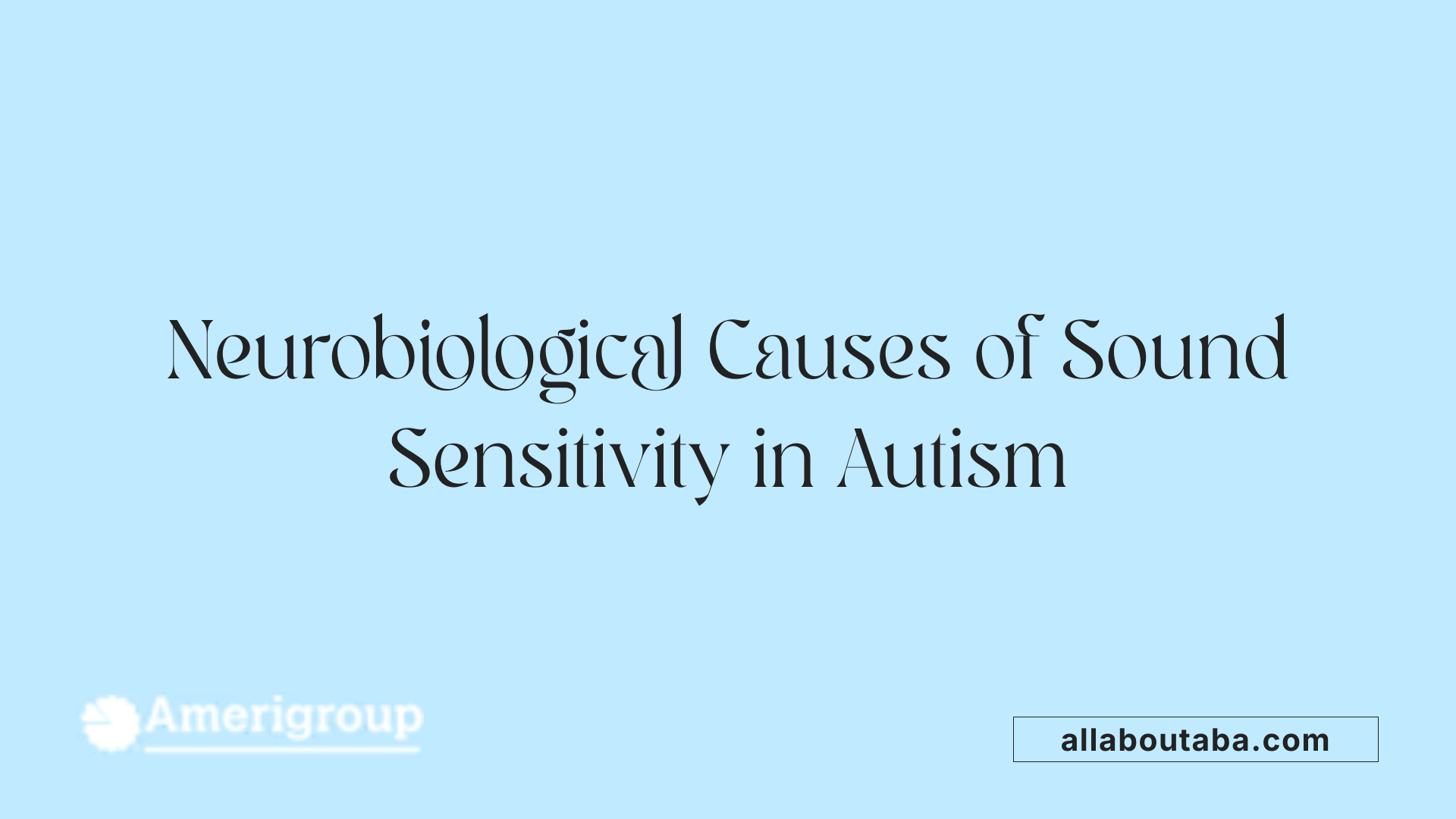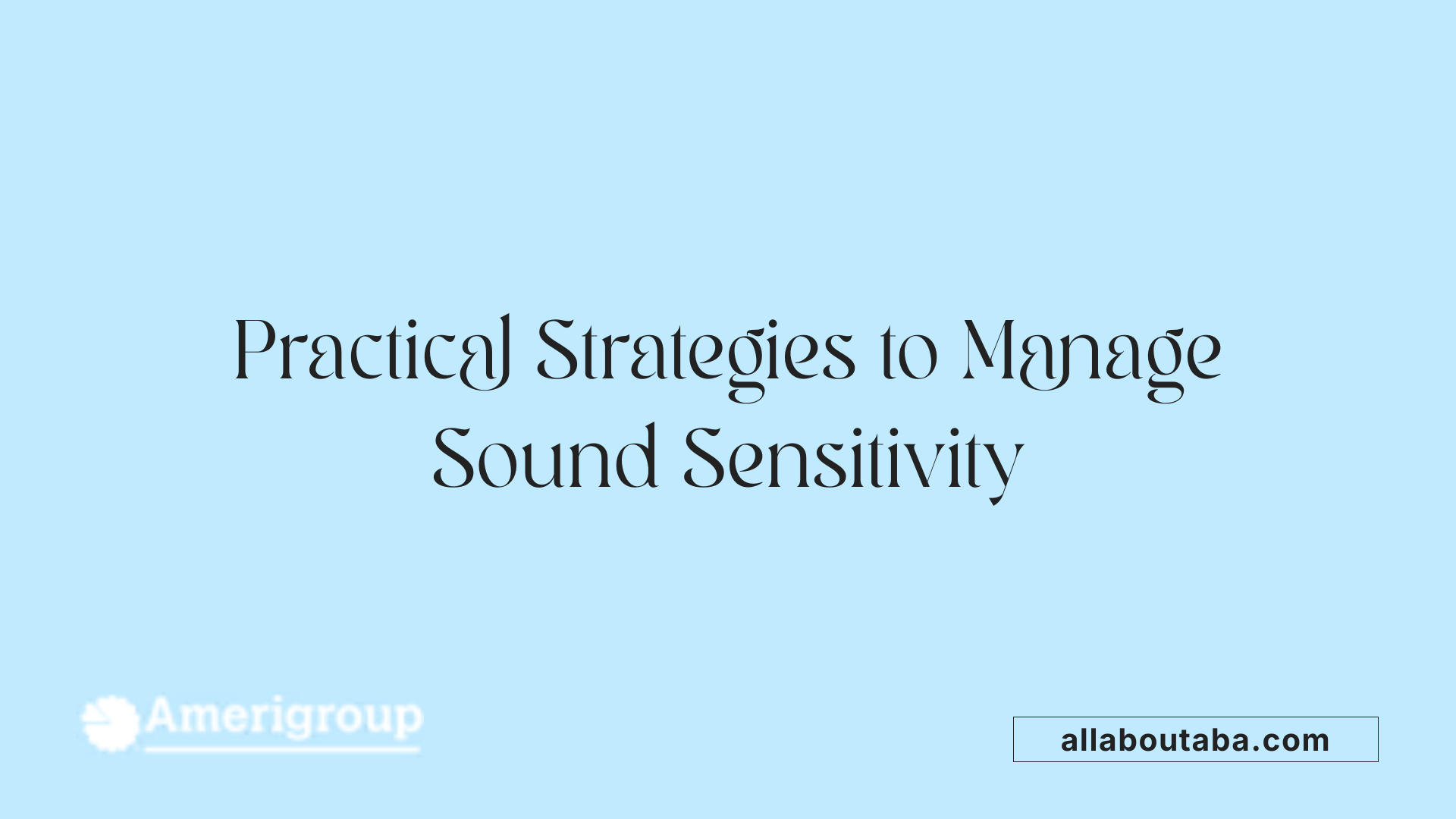Exploring Sensory Processing in Autism
Autism spectrum disorder (ASD) is characterized not only by social and communicative differences but also by a range of sensory processing challenges. Among these, sound sensitivity—or hyperacusis—stands out as one of the most prevalent and impactful issues faced by autistic individuals. Understanding the mechanisms, manifestations, and management of sound sensitivities is essential for fostering a more inclusive environment and improving quality of life for those on the spectrum.
What is sound sensitivity in autism?
What is sound sensitivity in autism?
Sound sensitivity, often called hyperacusis, is a condition where individuals with autism react more strongly to sounds that others find tolerable or normal. This heightened response can make sounds seem much louder, painful, or overwhelming. Many autistic people report discomfort or distress from everyday noises like background chatter, appliances, or traffic.
Research indicates that this sensitivity stems from differences in how the brain processes sensory information. Instead of a typical filtering of irrelevant stimuli, autistic brains may experience increased neural activity in sensory areas, especially in response to sound. For example, brain scans show greater activity in the amygdala and sensory cortices when exposed to sounds, highlighting an increased emotional and physiological reaction.
Neural mechanisms behind hyperacusis often involve changes in the auditory pathways, such as enhanced central auditory gain or imbalances in excitation and inhibition within the auditory system. Some theories propose anatomical differences or abnormal neural connectivity that heighten sound perception. In addition, physiological factors like stronger reflexes or impaired inhibitory responses in the auditory circuitry may contribute.
This condition significantly impacts daily life. Autistic individuals may avoid noisy environments, experience meltdowns, or have difficulty concentrating due to sensory overload. Signs include covering ears, trying to block out sounds, or experiencing discomfort during loud or high-pitched noises.
Various management strategies, such as using ear protection, creating quiet spaces, and employing sensory-friendly accommodations, can help reduce the impact. Therapeutic approaches like occupational therapy and CBT aim to build tolerance and develop coping skills. Despite the challenges, understanding and supporting sensory needs can greatly improve comfort and participation in everyday activities.
Manifestations and signs of sound sensitivity in autistic individuals

How does sound sensitivity manifest in autistic individuals?
Sound sensitivity, or hyperacusis, is a common sensory challenge faced by many autistic people. It shows up in various observable behaviors and reactions that can significantly impact daily life.
Autistic individuals often respond to everyday noises with heightened sensitivity. They might cover their ears, especially in noisy environments or when exposed to loud or unexpected sounds. Avoidance behaviors are also common; many try to steer clear of places like busy streets, shopping malls, or loud events.
Discomfort and distress are typical responses. These can include signs of anxiety, agitation, or even meltdowns triggered by certain sounds. These noises might be high-pitched, abrupt, or rhythmic, like the humming of appliances or the squealing of brakes.
In addition to heightened reactions, some may show an exaggerated startle response to sudden sounds. Difficulty filtering background noise from important sounds, such as a person's voice, is also prevalent. Interestingly, some autistic individuals are hypo-responsive, meaning they might not react much to loud noises, which can mask underlying sensitivities.
The neurophysiological basis of these reactions involves atypical processing in the brain's auditory pathways. Differences in neural connectivity, timing, and activity can cause sounds to seem disproportionately loud, painful, or overwhelming.
To manage these sensitivities, environmental adjustments play a crucial role. Use of noise-canceling headphones or earplugs can help. Creating quiet zones and incorporating calming sensory strategies assist in reducing distress. Therapeutic approaches like sensory integration therapy aim to improve sensory tolerance and regulation.
Understanding these manifestations helps caregivers, educators, and clinicians support autistic individuals in coping with sound sensitivities and improving their quality of life.
Impact of sound sensitivity on daily life and overall well-being

What impact does sound sensitivity have on daily life and well-being?
Sound sensitivity, also known as hyperacusis or other related conditions such as misophonia and phonophobia, heavily influences the daily experiences of individuals with autism. Many autistic individuals react strongly to common environmental sounds—like background noise, loud conversations, or mechanical noises—leading to discomfort and stress.
This heightened sensitivity often causes sensory overload, making it challenging to concentrate, communicate, or remain in noisy environments like schools, workplaces, or public spaces. For example, a classroom with chatter and bell sounds might overwhelm a student, leading them to cover their ears, leave the room, or become distressed.
The aftermath of consistent sensory overload can be exhaustion, emotional burnout, and increased anxiety. These reactions can restrict participation in social activities, limit community involvement, and affect mental health. Many find themselves avoiding certain environments or social interactions altogether to prevent discomfort or meltdowns.
Conversely, some autistic individuals experience hyposensitivity—a reduced response to sounds—leading to sensory-seeking behaviors that might also cause safety concerns or social misunderstandings.
Managing these sensitivities is essential. Using noise-canceling headphones, creating quiet spaces, and environmental modifications help improve comfort and inclusion. Recognizing the profound impact of sound sensitivities and providing appropriate support can enhance overall well-being, fostering better social participation, emotional health, and quality of life.
Neurobiological underpinnings of sound sensitivities in autism

What are the underlying causes of sound sensitivities in autism?
Sound sensitivities in autism, including hyperacusis, misophonia, and phonophobia, are rooted in differences in how the brain processes and connects sensory information. Neuroimaging studies reveal that specific brain regions involved in auditory perception and sensory integration are functionally atypical in autistic individuals.
Research has demonstrated that brain areas such as the primary auditory cortex, sensory processing cortices, and the amygdala show increased activity when exposed to sounds. These heightened responses may be due to abnormal neural connectivity and circuitry within the brain's sensory networks.
Several factors contribute to these neurobiological differences. Atypical neural development, including abnormal neuronal migration and synaptic pruning, results in excess neural connections or 'neural noise' that hinder effective sensory filtering. This overconnectivity can cause sounds to be perceived as louder or more overwhelming than they are for neurotypical individuals.
Functional MRI studies have shown that altered neural interactions between auditory regions and limbic structures like the amygdala may amplify emotional reactions to sounds. Additionally, neurodevelopmental alterations, such as excitation/inhibition imbalances in auditory pathways, play a role in heightened sensitivity.
In sum, the neurobiological basis of sound sensitivities in autism stems from complex interactions between structural and functional changes in brain networks responsible for sensory processing. These changes lead to exaggerated responses to environmental sounds, which can cause distress and impact daily functioning for autistic individuals.
Assessment and prevalence of auditory sensitivities

How common are auditory sensitivities like hyperacusis in autism, and how are they assessed?
Auditory hypersensitivities, such as hyperacusis, are prevalent among individuals with autism, with estimates indicating that roughly 18% to over 70% of autistic people experience some form of sound sensitivity. These sensitivities can cause discomfort, anxiety, and behavioral challenges due to an over-responsiveness to everyday noises.
In terms of assessment, clinicians use a variety of methods to evaluate auditory sensitivities. Behavioral tests, such as observing responses during audiometry, can indicate abnormal reactions to sound levels or pitches. However, these behavioral responses may reflect sensory processing differences rather than actual hearing impairments.
Objective measures include audiological evaluations like otoacoustic emissions (OAEs) and auditory evoked potentials, which assess how the auditory system responds to sound stimulation. These tests help determine if hearing sensitivity itself is normal, despite behavioral overreactions.
Neurophysiological techniques such as EEG (electroencephalography) and functional MRI (fMRI) provide deeper insights by capturing the brain’s activity in response to sounds. For instance, studies have shown that autistic individuals often display increased activity in sensory processing cortices and the amygdala when exposed to noise, indicating heightened neural responses.
Specialized protocols, like the Listening Project Protocol (LPP), involve computer-modified acoustic stimulation designed to exercise and regulate neural responses to sound. Such protocols aim to reduce hyperacusis by helping the brain better manage auditory input.
Overall, combining subjective reports, behavioral observations, and objective neurophysiological data enables a comprehensive assessment of auditory sensitivities in autism, guiding tailored intervention strategies.
Strategies and interventions to manage sound sensitivity

What strategies and interventions can help manage sound sensitivity in autistic individuals?
Managing sound sensitivity in those with autism involves a combination of environmental adjustments, therapeutic approaches, and technological support to create a more comfortable experience.
Environmental modifications are fundamental. Creating quiet, sensory-friendly spaces with soft lighting, minimal background noise, and calming textures can greatly reduce overstimulation. Tools like noise-canceling headphones and earplugs are effective in dampening overwhelming sounds and providing a sense of control. Establishing designated calm areas at home, school, or workplaces offers safe zones where individuals can retreat when feeling overwhelmed.
Therapies and behavioral strategies focus on helping individuals develop coping skills. Occupational therapy plays a vital role by assessing sensory triggers and designing personalized interventions. Sensory diets—custom plans involving specific activities like deep pressure massage, swinging, or rocking—aid in regulating sensory input and preventing overload.
Behavioral strategies include teaching self-regulation techniques such as deep breathing, mindfulness exercises, and gradual desensitization to gradually introduce individuals to challenging sounds. These methods empower individuals to manage their responses and reduce anxiety related to noise sensitivity.
In addition to therapies, the use of sensory tools like fidget toys, visual supports, and weighted blankets can enhance comfort and focus. Consistent routines and predictability also help reduce unexpected sensory surprises.
Technological aids significantly assist in managing sound sensitivities. Hearing devices such as low-gain hearing aids can reduce distracting background noise. Implementing soundproofing measures—like rugs, curtains, or acoustic panels—further diminishes environmental noise.
Overall, a tailored approach combining these strategies and accommodations fosters better management of sound sensitivities. Supporting individuals in understanding their sensory needs and reinforcing coping skills leads to improved well-being and participation in daily activities.
Educational and support resources for autism-related sensory issues
'Sensory issues are common in individuals with autism, presenting unique challenges that can significantly impact daily life. Fortunately, numerous educational and support resources are available to assist parents, caregivers, and educators in understanding and managing these sensitivities.
For families and educators seeking knowledge, specialized websites and organizations offer comprehensive articles, videos, and webinars. These resources cover various aspects of sensory processing differences, including hyper-responsiveness and hyposensitivity, and suggest practical strategies to create sensory-friendly environments. They also provide guidance on recognizing signs of sensory overload, such as covering ears, withdrawing from noisy settings, or exhibiting distress.
Support groups and advocacy organizations play a crucial role by connecting families for peer advice and emotional support. These groups often host workshops, conferences, and online forums that deepen understanding and promote best practices for supporting individuals with autism.
In addition to informational resources, therapeutic interventions like occupational therapy, sensory integration therapy, and speech therapy are tailored to help children process sensory input effectively. Many programs emphasize early intervention, environmental adjustments, and promoting self-advocacy skills.
Educational institutions increasingly implement accommodations such as quiet spaces, visual supports, and sensory tools to assist students with sensory sensitivities. Teacher training programs increasingly include modules on sensory awareness and management techniques.
Overall, these resources collectively aim to foster supportive environments at home and school, helping individuals with autism navigate their sensory worlds more comfortably. For further assistance, searching 'Resources for sensory issues in autism' online can connect families and educators to local and national support options.'
Coping techniques for individuals with autism facing sound sensitivities
What techniques can autistic individuals use to cope with sound sensitivities?
Autistic individuals often face challenges from hypersensitivity to everyday sounds, which can lead to sensory overload and distress. To manage these sensitivities effectively, a range of strategies can be employed.
One of the most common approaches is using noise-canceling devices such as headphones or ear defenders. These tools help dampen loud or overwhelming sounds, allowing individuals to better tolerate their environments.
Creating quiet spaces is another crucial strategy. Providing a safe haven where they can retreat when feeling overstimulated helps reduce anxiety and prevents meltdowns. These spaces should be soundproofed or shielded from excessive noise.
Visual supports like schedules, timers, and cues can prepare individuals for noisy environments or transitions, reducing unpredictability that can heighten stress.
Gradual exposure to certain sounds through controlled desensitization, ideally under professional guidance such as sensory integration therapy, can help reduce sensitivity over time. This process involves slowly introducing sounds at tolerable levels and increasing exposure gradually.
Teaching calming techniques such as deep breathing, mindfulness, and relaxing activities can help regulate reactions to sensory overload. These methods promote emotional regulation and provide coping mechanisms during stressful situations.
Environmental adjustments are also beneficial. Reducing background noise sources, positioning seating away from noisy equipment, and providing access to quiet zones can make daily life more manageable.
Overall, a combination of personal coping tools and environmental modifications tailored to individual needs can greatly improve quality of life for autistic individuals with sound sensitivities.
The importance of awareness and advocacy around sensory sensitivities in autism
Why are autistic people often sensitive to sound?
Autistic individuals frequently experience heightened sensitivity to sounds because of differences in how their brains process auditory information. Various neurobiological factors contribute to this phenomenon.
Research shows that there are atypical responses in the auditory cortex and related brain regions, such as delayed response times, reduced ability to habituate to sounds, and unusual brain oscillations. These differences result in a brighter perception of everyday noises, which can feel overwhelming or painful.
Neural connectivity also plays a role. In autism, the connection between auditory areas and other sensory or language processing regions can be altered, leading to hypersensitivity.
Furthermore, imbalances in excitatory and inhibitory neurotransmitters, which regulate neural activity, may cause increased neural excitability. This heightened state of alertness can make sounds seem louder or more intrusive.
Structural differences in the brain, including variations in gray and white matter within auditory pathways, as well as irregular development of these pathways, further intensify sensitivity.
Altogether, these neurobiological variations cause the perception of sound to be intensified or distressing for many autistic people, affecting their daily life and emotional well-being.
Efforts to raise awareness about these sensory differences are crucial. Understanding that sound sensitivities are rooted in brain differences, not just behavioral choices, helps reduce stigma and promotes supportive environments.
Advocacy can drive the implementation of practical accommodations, such as quiet spaces, noise-canceling devices, and tailored educational strategies. Empowering individuals and families with knowledge ensures better management and acceptance.
Supporting research into the neurobiological basis of sensory sensitivities continues to be important. As knowledge grows, so does our ability to create inclusive settings that adapt to the needs of autistic people.
Effective advocacy and increased public understanding can significantly improve quality of life, fostering a society that respects and accommodates diverse sensory experiences.
Building a supportive environment for sensory comfort
Addressing sound sensitivities in autism requires understanding, compassion, and proactive accommodations. Through ongoing research, education, and community support, we can create environments that respect sensory needs, reduce distress, and enhance participation and well-being for autistic individuals. Recognizing the neurobiological basis and diverse manifestations of sound sensitivities empowers us to implement effective interventions, making everyday life more manageable and fulfilling for those affected.
References
- What Do We Know About Noise Sensitivity In Autism?
- Autism and Sound Sensitivity: Why it Happens and Coping Tips
- A Review of Decreased Sound Tolerance in Autism - PubMed Central
- Sensory issues - Autism Speaks
- What Do We Know About Noise Sensitivity in Autism?
- Sensory differences - a guide for all audiences
- Autism and Sound Sensitivity: Everything You Need to Know
- Hyperacusis in Autism Spectrum Disorders - PMC - PubMed Central
- Autism and Sound Sensitivity: Understanding Responses to Noise
- A qualitative study of noise sensitivity in adults with autism spectrum ...







